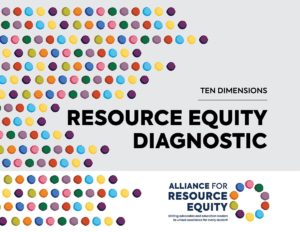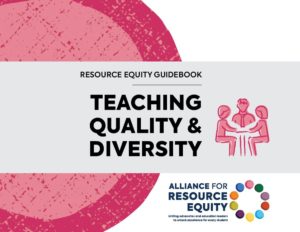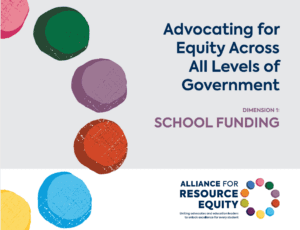The Vision
Each student—including students with higher needs and students of color—has access to an effective integrated system of supports (which includes an accurate and unbiased identification process) to address their individualized, nonacademic needs, so all students can reach high standards and thrive. Each student has access to meaningful guidance to set them up for success beyond high school.
Sample Questions to Ask
- How does the student-to-staff ratio for school psychologists, social workers, nurses, and other social-emotional and health support staff vary across schools in our district?
- What data, processes, and routines exist to identify when students need targeted social-emotional, physical, or family support—and to connect them to the right support?
- How do schools in our district integrate college and career support across grade levels, including for students enrolled in vocational or career and technical education programs?
See our DIY District Diagnostic for more examples and recommendations about the types of data to look at.
What Does the Data Say About Student Supports & Intervention
Our Data Stories will help deepen your understanding of how dimensions of resource equity like Student Supports & Intervention play out in schools and districts across the country.
As you navigate these interactive stories, you’ll learn how system shifts can lead to more equitable and better student experiences and outcomes. Then, take action by reflecting on the inequities that exist within your system and consider ways to drive transformational change to help your highest-need students.
Take Action With Our Diagnostic Tools
- Use our Resource Equity Diagnostic: Self-Assessment tool to start conversations and build shared understanding across teams.
- Then, analyze your data to better understand the state of resource equity in your district. First, use our Diagnostic Blueprints to learn about what types of analyses to conduct. Then, input your district data into our DIY Analysis Tools to complete these analyses and make meaning of the results.
- Prioritize areas for further inquiry and identify potential root causes and actions using our District Guidebook.
Common Causes of Inequity
- Biased Identification Process: If obscure or biased systems for identifying and monitoring students’ needs are in place, schools in a district will struggle to provide appropriate non-academic supports for students.
- Insufficient Staff Capacity and Expertise: Students may not have access to the staff and support services that would best meet their needs if hiring and professional learning practices are insufficient or if staff don’t have the expertise or time they need to effectively support students.
- Insufficient Programs and Practices: When schools do not have effective, culturally sustaining programs and practices embedded into the day-to-day functioning, it can be challenging to provide students with individualized supports.
Related Dimensions
No single dimension of education resource equity can unlock every student’s potential—but when dimensions are combined to meet students’ distinct needs, they are a strong foundation for unlocking better, more equitable experiences in school.
Explore the Positive & Inviting School Climate dimension because climate is, in part, affected by the universal supports that are readily available to all students.
Toolkit
Use our Resource Equity Toolkit to learn more, start a conversation, and take action in your community.

The Education Combination
Learn about education resource equity by discovering 10 dimensions that unlock better, more equitable experiences in school for all students.

Diagnostic Tools And Supports
Identify strengths and gaps in your school system across all 10 dimensions.

Guidebooks
Explore underlying causes of your school system’s challenges and possible actions to improve students’ experiences in school.

Advocating Across Government
Identify who has the power to address equity gaps in your school system and the school district, state and federal levels.

Casemaking Decks
Develop compelling and coherent messaging to “make the case” for addressing resource inequities in your community.